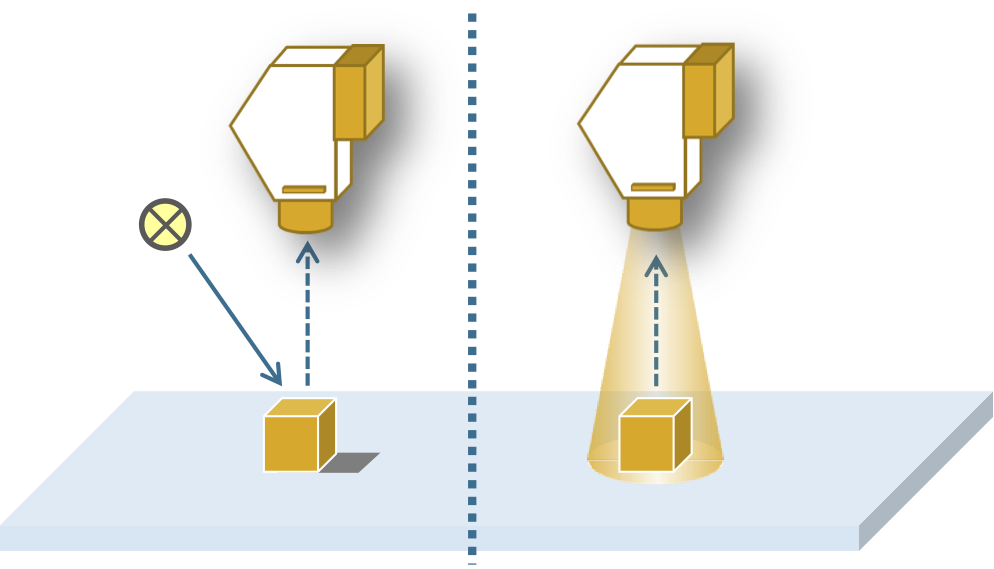Excitation and sample motion
As with other spectral methods, hyperspectral imaging involves an interaction (absorption, reflection) of the light with the sample. For this reason, broadband sources are preferred for illumination. For the spectral ranges mentioned, these are, for example, halogen sources (VIS, NIR, SWIR) or deuterium lamps (UV). Depending on the sample morphology and structure, spot, line or diffuse illumination is selected. Special cases are transmission measurements and/or the recording of directional reflection, which are often found in microscope adaptations. The choice of the correct illumination is a decisive factor for successful hyperspectral measurements; in any case, the image line should be illuminated homogeneously. This is the only way to record reliable data and reduce the time and effort required for data evaluation or to enable meaningful data evaluation in the first place.

Schematic illustration of excitation with a spot source vs. diffuse excitation
While spot illumination tends to be influenced by the substrate (e.g. rolling direction of the stainless steel) and varying degrees of reflection of the primary beam, diffuse-homogeneous illumination enables observation of the aluminum oxide thin film applied to the stainless steel substrate. This is made possible by transferring the principle of the integrating sphere, which is well known in spectroscopy, to the illumination of the line. The Fraunhofer IWS has developed corresponding integration spheres for this purpose, which offer a corresponding diffuse-homogeneous light field through the use of optical PTFE (the sintered material creates many scattering centers). The working distances that can be realized with this are limiting, as the light is also scattered in all spatial directions at the exit slit.

Example of differences caused by different excitation sources
For spherically larger samples (e.g. inspection of apples), 360° arrangements of individual spots are suitable as illumination in order to keep the intensity homogeneous at every point and every height of the sample. Fiber-coupled line or ring lights can also be used for samples that are less demanding in terms of their surface properties or size. However, the fibers used are often limited to the VIS range.
A motion system is also required to complete a measuring system. There are practically no limits to the possibilities from the laboratory and industrial environment, but the software for data acquisition should be synchronized with the respective motion system and the accuracy of the motion systems should meet the requirements of the sample or data acquisition. Options for motion systems include Linear, cross and rotary tables, conveyor belts, multi-axis gantries, robots.
